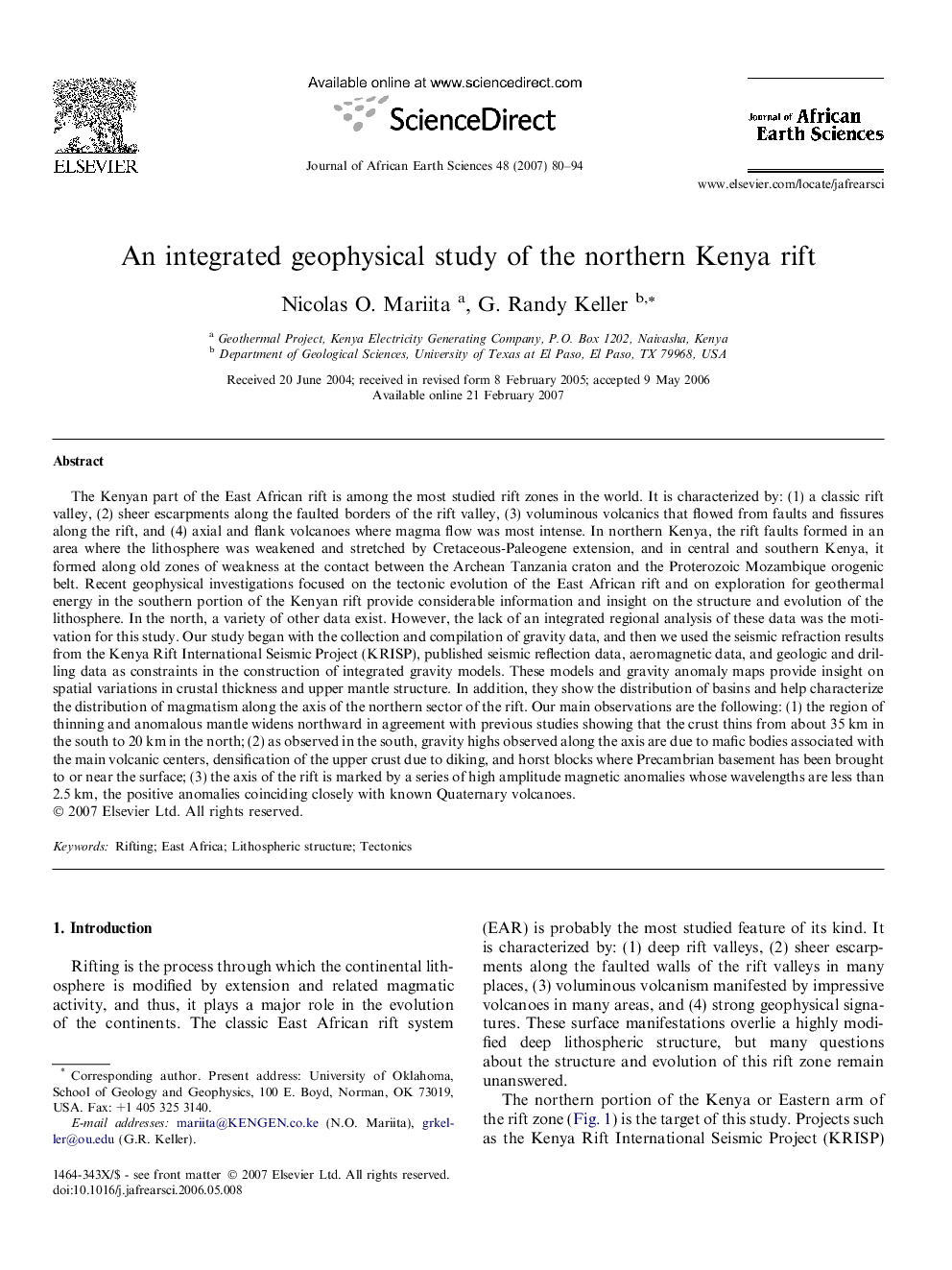| کد مقاله | کد نشریه | سال انتشار | مقاله انگلیسی | نسخه تمام متن |
|---|---|---|---|---|
| 4729759 | 1640260 | 2007 | 15 صفحه PDF | دانلود رایگان |

The Kenyan part of the East African rift is among the most studied rift zones in the world. It is characterized by: (1) a classic rift valley, (2) sheer escarpments along the faulted borders of the rift valley, (3) voluminous volcanics that flowed from faults and fissures along the rift, and (4) axial and flank volcanoes where magma flow was most intense. In northern Kenya, the rift faults formed in an area where the lithosphere was weakened and stretched by Cretaceous-Paleogene extension, and in central and southern Kenya, it formed along old zones of weakness at the contact between the Archean Tanzania craton and the Proterozoic Mozambique orogenic belt. Recent geophysical investigations focused on the tectonic evolution of the East African rift and on exploration for geothermal energy in the southern portion of the Kenyan rift provide considerable information and insight on the structure and evolution of the lithosphere. In the north, a variety of other data exist. However, the lack of an integrated regional analysis of these data was the motivation for this study. Our study began with the collection and compilation of gravity data, and then we used the seismic refraction results from the Kenya Rift International Seismic Project (KRISP), published seismic reflection data, aeromagnetic data, and geologic and drilling data as constraints in the construction of integrated gravity models. These models and gravity anomaly maps provide insight on spatial variations in crustal thickness and upper mantle structure. In addition, they show the distribution of basins and help characterize the distribution of magmatism along the axis of the northern sector of the rift. Our main observations are the following: (1) the region of thinning and anomalous mantle widens northward in agreement with previous studies showing that the crust thins from about 35 km in the south to 20 km in the north; (2) as observed in the south, gravity highs observed along the axis are due to mafic bodies associated with the main volcanic centers, densification of the upper crust due to diking, and horst blocks where Precambrian basement has been brought to or near the surface; (3) the axis of the rift is marked by a series of high amplitude magnetic anomalies whose wavelengths are less than 2.5 km, the positive anomalies coinciding closely with known Quaternary volcanoes.
Journal: Journal of African Earth Sciences - Volume 48, Issues 2–3, June 2007, Pages 80–94